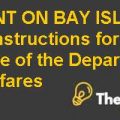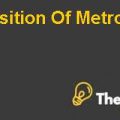Sterling Household Products Company Case Study Solution
The expansion plan
On account of the management’s decision to expand the operations in the year 2013; the valuation is performed through using the discounted free cash flow approach. The initial investment that would be required for the expansion plan, amounts $600000 in the year 2013. As per the information provided in the case, the additional sales would equal 20 percent of the base sales from the unit in year 2014 & then would grow 30 percent of the base sales and finally to 40 percent of the base sales in 2016. Additionally, the company’s efforts to maintain the capacity of production in the expansion investment would require a capital expenditure of $600000 on an annual basis.Whereas, the net working capital assumed to be the percentage of sales of changes in working capital calculated for the proposed sales plan. The net free cash flows of the project for each year is calculated by deducting the changes in working capital and capital expenditures from the free cash flows.
For the expansion plan, the terminal value is calculated for the next projected years. The terminal value is estimated as a multiplier of 9 times the free cash flow generated by the project until the year 2022. The terminal value multiplier of 9 times free cash flow captured the value of all liquidation, investment and operating cash flows in the final 10 year. Thus, the terminal value is calculated as: $85946.21. Furthermore, the present value of all cash flows is calculated by using the NPV formula, in which the WACC is used as a discount rate of 6.5 percent is used, resulting in present value of $96168. Moreover, under the expansion plan valuation, the project seems to be generating positive net present value as the project would require an additional expansion cost of $60000 and it would be generating $36168.
The analysis shows that both projects including the base case and expansion plan,have the potential to generate positive cash flows for the period of forecasted years. With the intention of identifying the combined effect of the expansion plan; both net present value under the base case and expansion plan are added, thus providing a strong foundation for accepting the project as the project would be worthwhile and would lead towards higher returns.(Luehrman, 2019).
The capital budgeting tools
The proposed sale
The internal rate of return of the base case project is calculated to be 7.411 percent, which stipulates the annualized rate of return for the given investment. The IRR of 7.411 percent means that the project would yield greater benefits to the company. Additionally, the base case’s modified internal rate of return is 7 percent, reflecting the project’s profitability as well as its feasibility.
The expansion plan
The internal rate of return of the base case project is calculated to be 14 percent, which stipulates the annualized rate of return for the given investment. The Internal rate of return of the expansion plan is greater than the internal rate of return of the base case. The IRR of 14 percent means that the project would yield greater benefits to the company. Additionally, the base case’s modified internal rate of return is 12 percent, thus reflecting the profitability and feasibility of the project.(Gallo, 2017).
Evaluation of acquisition
In today’s competitive market; one of an easiest and fastest way to grow the business is merger and acquisition, which offers new possibilities to enter into the new market and obtain an easier access to the competent and skilled labor force. By broadening the customer and market access; the company expects would be able to generate higher returns and beat the head-to-head competition, based on its portfolio’s diversification, high growth potential and access to goodwill and experience of acquiring company. Additionally, the powerful retailers in the market tend to squeeze Sterling and other competitors with respect to the wholesale price and volume, which in turn results in larger incentives as well as other benefits, which could create distress among the company’s management. Therefore, the expansion seems to be a beneficial opportunity for the company, so by sharing their knowledge and mutual cooperation; the company would be able to lead the market in the near future.(Weinhold, 2015).....................................
This is just a sample partical work. Please place the order on the website to get your own originally done case solution.










